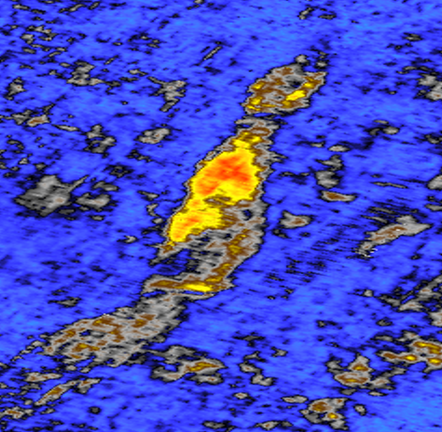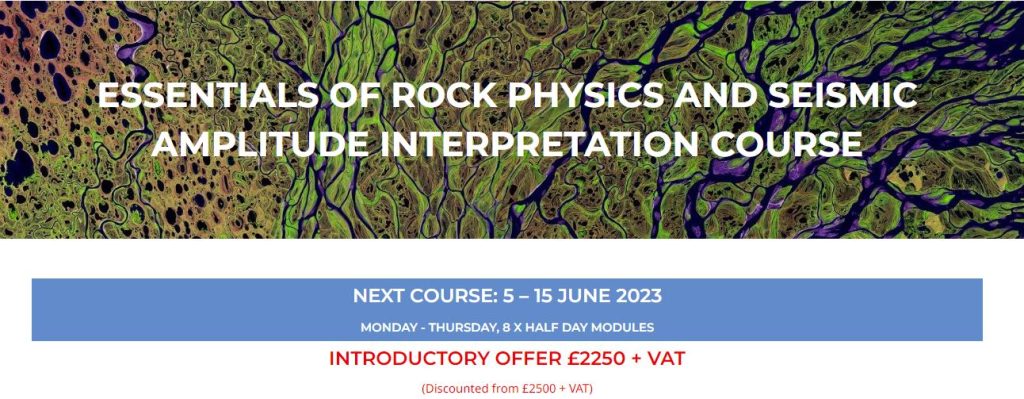Acquiring, reprocessing or inverting seismic data are expensive processes. Rock physics analysis can maximise the value of your existing data, allowing you to de-risk amplitude driven prospects and make more informed decisions about future investments. Rock physics can also be used to support the Energy Transition, providing a set of workflows essential for screening and monitoring CCS sites.
At its heart, rock physics provides the link between seismic and well log data. This opens up a wealth of opportunities:
1. Characterise rock properties measured in well logs.
Comparing wireline log data to established rock physics models allows properties such as the distribution of clay within a sandstone reservoir or the rigidity of the rock frame to be interpreted. These properties can influence the productivity of a hydrocarbon reservoir or evaluate the containment risk of a potential CCS site.
2. Relate rock properties to seismic amplitude responses.
Rock physics can also calibrate the physical properties of a rock to their expression on seismic. Seismic amplitude maps can then be used to qualitatively infer how rock properties are varying away from well penetrations.
In some situations, rock physics can be used to constrain a quantitative interpretation (QI). If a key characteristic (such as hydrocarbon presence, reservoir porosity or CO2 saturation) can be correlated to a rock physics attribute, then seismic inversion can be carried out to give a 3D rock property cube. This allows reservoir data encoded in the seismic to be extracted and used to guide or define properties in geological models.

3. Model “what if?” scenarios.
Once the relationship between rock properties and seismic amplitudes is understood, the possibility of forward modelling different scenarios opens up. Examples include modelling changes to a reservoir’s porosity, thickness or saturating pore fluid (water, hydrocarbon or CO2).
Let’s say we wanted to model the impact of changing a reservoir’s pore fluid from water to gas. Rock physics techniques can be used to model what the well logs would look like if the saturating pore fluid was gas instead of water. The modelled logs can then be convolved with a wavelet to visualise what a gas sand would look like on seismic. This is a useful method for trying to understand what the seismic amplitudes over an undrilled, prospective structure represent in terms of reservoir quality or fluid type.
Forward modelling is also a valuable technique for predicting changes in seismic amplitude over time e.g. as CO2 is injected or hydrocarbons are produced. The predicted changes can be compared to a 4D seismic monitor survey and used to validate (or challenge!) the geological model and simulations.

4. Analyse risk.
An accurate assessment of risk is critical to all subsurface workflows, be it the likelihood a prospect contains hydrocarbons, or the probability a cap-rock is able to support CO2 injection. As discussed, rock physics can be used to characterise rock properties, relate these properties to seismic amplitude responses and assess how different the seismic might look if a parameter (e.g. reservoir porosity) is changed. Not only does rock physics help us to understand the rocks in the study area, but it also provides a means of assessing the uncertainty in our interpretations.
By integrating rock physics into the subsurface analysis, we can bring more information to bear during the risking process, ultimately leading to more informed decisions.
Merlin will be running the Essentials of Rock Physics and Seismic Amplitude Interpretation course on 5th – 15th June. Delivered in partnership with RPA, this non-software specific course has been helping geoscientists to understand the practical aspects of rock physics techniques since 1999.
Please get in touch if you’d like to know more about rock physics or enquire about the Essentials of Rock Physics course: info@merlinenergy.co.uk




